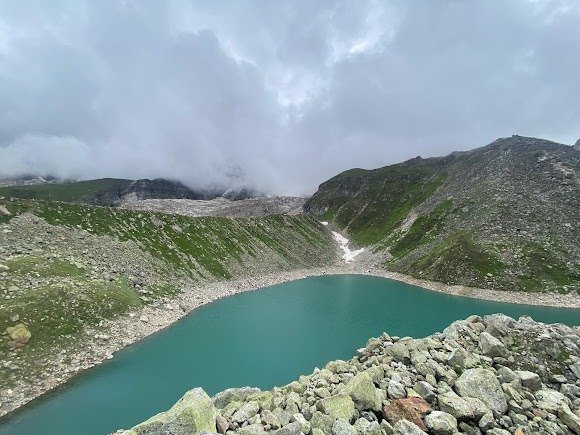Overview
The Satopanth Lake trek is a revered and challenging high-altitude journey in the Garhwal Himalayas of Uttarakhand, India. It leads to the pristine, triangular-shaped Satopanth Lake, nestled amidst towering snow-capped peaks at an elevation of approximately 4,600 meters (15,100 feet). The lake holds immense spiritual significance, believed to be the meditation spot of the Hindu trinity of Brahma, Vishnu, and Shiva, and a path taken by the Pandavas on their way to heaven.
The trek typically starts from Mana village, just a few kilometers beyond the holy town of Badrinath, which serves as the base for acclimatization. The total trekking distance spans around 40-50 km, usually completed over 6 to 8 days, including travel to and from the base.
The route is considered moderately difficult to difficult, primarily due to the high altitude, steep ascents, and challenging terrain that includes walking over boulders, moraines, and sometimes snow patches. Trekkers pass through diverse landscapes, from the last inhabited village of Mana, alongside the roaring Alaknanda River, past the spectacular Vasudhara Falls, and through alpine meadows like Laxmivan and Chakrateerth, which serve as campsites. Views of prominent Himalayan peaks such as Chaukhamba, Neelkanth, Balakun, and Swargarohini are constant companions throughout the journey.
Acclimatization is crucial on this trek given the significant altitude gain. Trekkers need to be physically fit and ideally have some prior high-altitude trekking experience. While the trail is generally clear, hiring an experienced guide and porters is highly recommended due to the remoteness and the challenging nature of the terrain. Essential trekking gear, including tents, sleeping bags, and warm clothing, must be carried as there are no permanent shelters beyond Mana.
Highlights
- The Triangular Satopanth Lake
- Spiritual Significance
- Panoramic Views of Giants
- Vasudhara Falls
- Mana Village
- Alaknanda River
- Challenging Terrain and High Altitude



